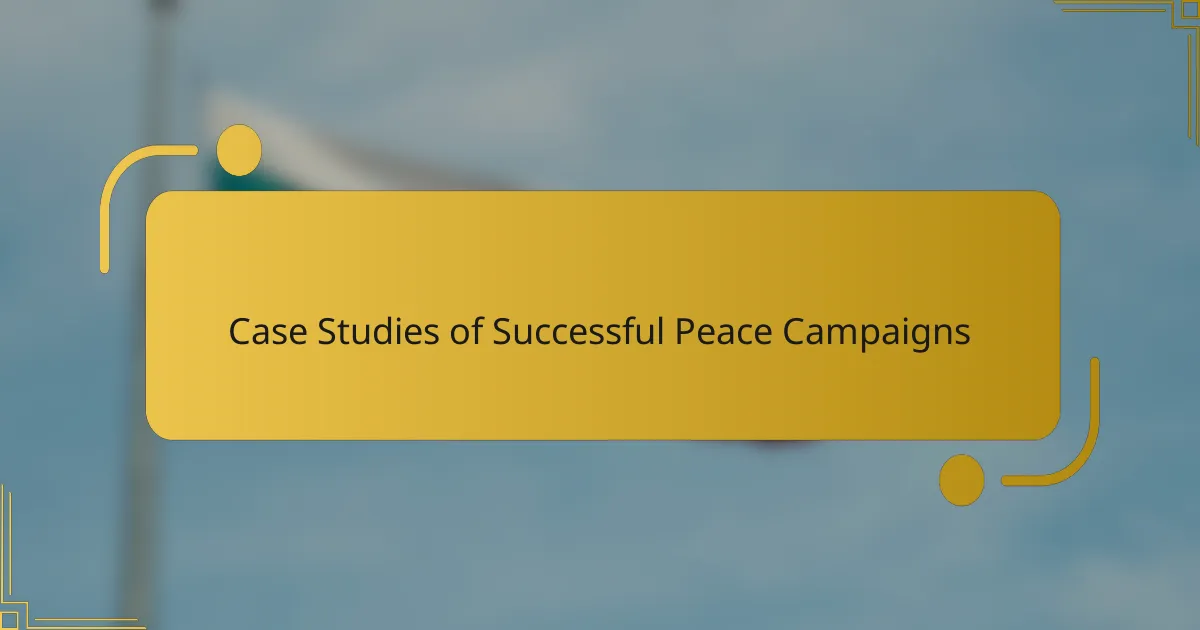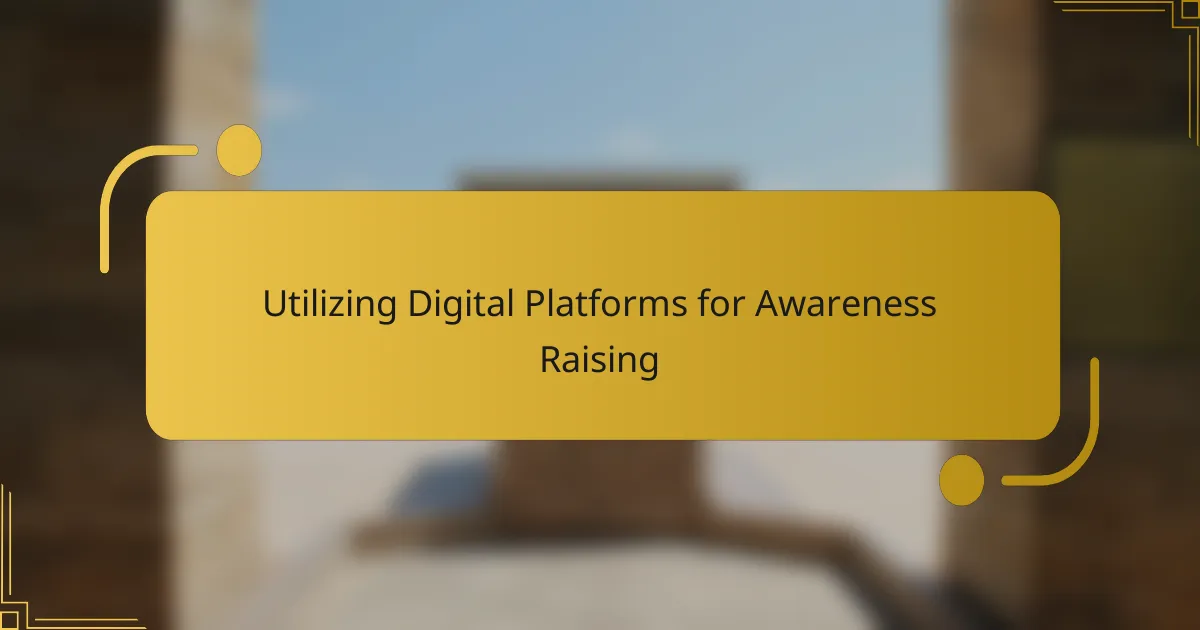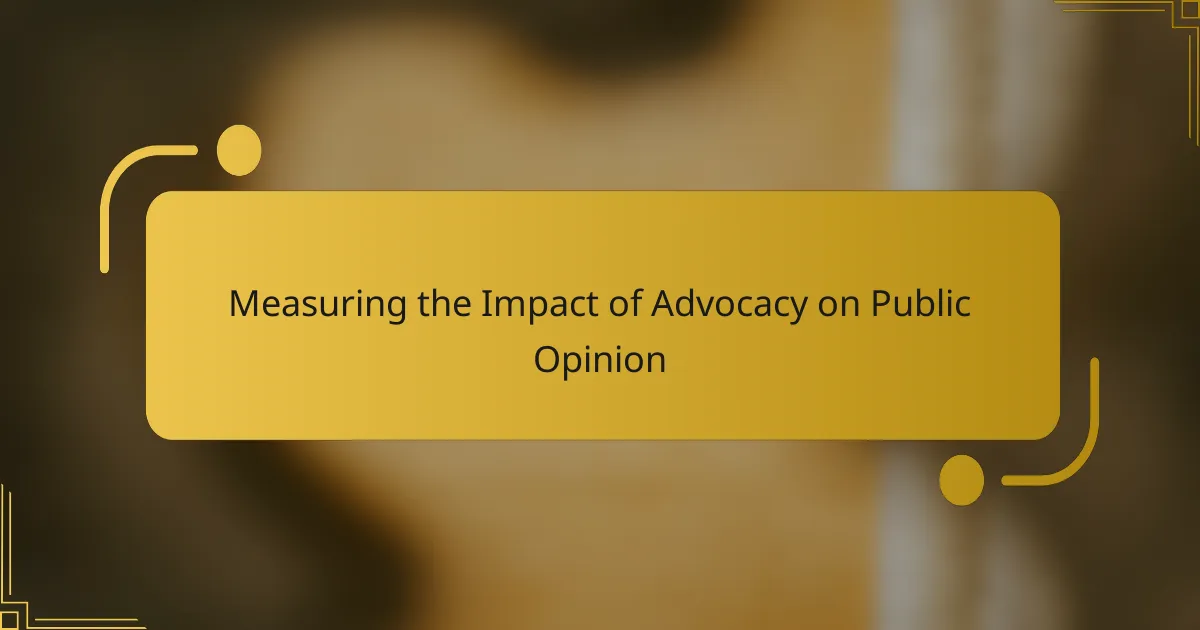Successful peace campaigns have historically employed nonviolent strategies to address conflicts and foster social justice. Through grassroots mobilization, strategic alliances, and effective communication, these initiatives have achieved significant milestones, as seen in movements led by figures like Gandhi and Martin Luther King Jr. Their experiences underscore the importance of community involvement and adaptability in creating lasting change.
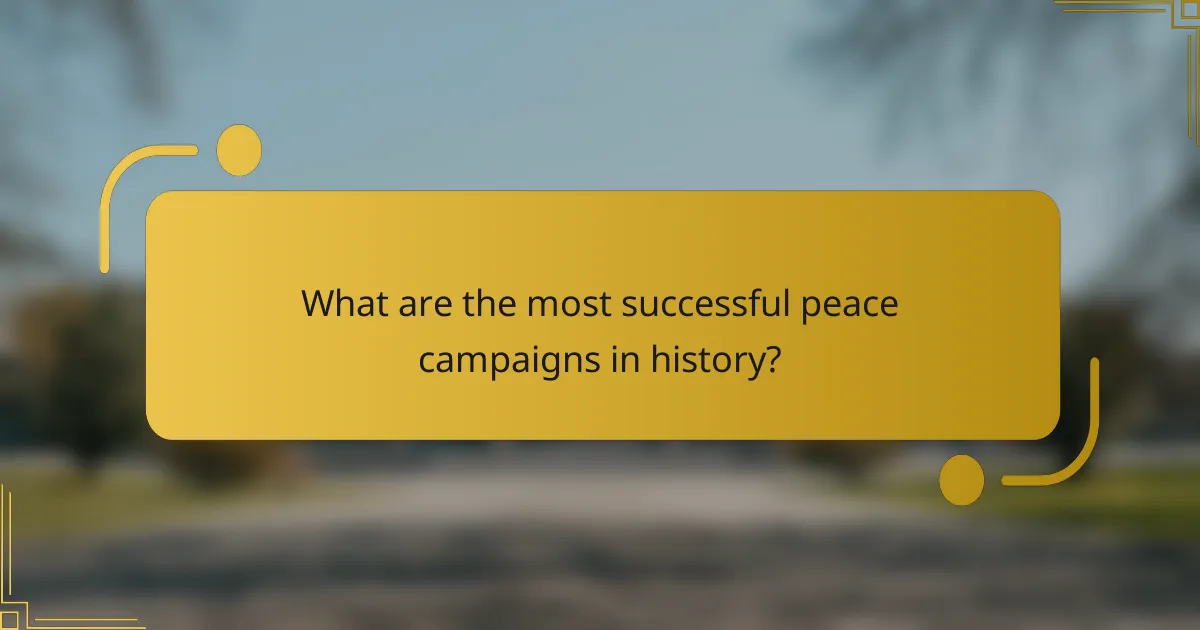
What are the most successful peace campaigns in history?
Successful peace campaigns throughout history have utilized nonviolent strategies to resolve conflicts and promote social justice. Notable examples include Gandhi’s efforts in India, Martin Luther King Jr.’s civil rights movement in the United States, South Africa’s Truth and Reconciliation Commission, and the United Nations’ peacekeeping missions.
Gandhi’s Nonviolent Resistance in India
Gandhi’s nonviolent resistance, or Satyagraha, was a pivotal campaign that aimed to end British colonial rule in India. By promoting peaceful protests, civil disobedience, and boycotts, Gandhi mobilized millions to join the struggle for independence without resorting to violence.
Key actions included the Salt March in 1930, where thousands marched to the sea to produce salt, defying British laws. This campaign effectively highlighted the injustices of colonial rule and garnered international attention, ultimately leading to India gaining independence in 1947.
Martin Luther King Jr.’s Civil Rights Movement
Martin Luther King Jr. led a significant nonviolent civil rights movement in the United States during the 1950s and 1960s, advocating for racial equality and justice. His approach combined peaceful protests, legal challenges, and powerful speeches to inspire change.
One of the most notable events was the 1963 March on Washington, where King delivered his famous “I Have a Dream” speech. This movement resulted in landmark legislation, including the Civil Rights Act of 1964 and the Voting Rights Act of 1965, which helped dismantle institutionalized racism.
South Africa’s Truth and Reconciliation Commission
South Africa’s Truth and Reconciliation Commission (TRC) was established in the 1990s to address the atrocities committed during apartheid. The TRC aimed to promote national healing through truth-telling and accountability, allowing victims and perpetrators to share their experiences.
The commission facilitated public hearings, where individuals could testify about human rights violations. This process not only acknowledged past injustices but also laid the groundwork for a more inclusive society, demonstrating the power of dialogue in conflict resolution.
UN’s Peacekeeping Missions
The United Nations’ peacekeeping missions have played a crucial role in maintaining peace and security in conflict zones worldwide. These missions involve deploying international forces to help stabilize regions, protect civilians, and support the implementation of peace agreements.
Notable missions include those in Cyprus, the Democratic Republic of the Congo, and Bosnia. While peacekeeping can be effective, challenges such as limited resources and political complexities often arise, highlighting the need for robust international cooperation and commitment to peace efforts.

How did these campaigns achieve their goals?
Successful peace campaigns often achieve their goals through a combination of grassroots mobilization, strategic alliances, and effective communication. By engaging communities, leveraging local leadership, and utilizing media, these campaigns can create a powerful movement for change.
Grassroots Mobilization Techniques
Grassroots mobilization involves organizing community members to participate actively in peace initiatives. Techniques such as door-to-door outreach, community meetings, and local events help build a strong support base. Campaigns often utilize social media platforms to reach wider audiences and encourage participation.
Effective grassroots efforts focus on inclusivity, ensuring diverse community voices are heard. This can involve training local volunteers to lead initiatives, which fosters ownership and commitment among participants. Campaigns should aim for a mix of online and offline strategies to maximize engagement.
Strategic Alliances with Local Leaders
Forming strategic alliances with local leaders is crucial for gaining credibility and support. These leaders often have established trust within their communities, making them valuable allies in peace campaigns. Collaborating with respected figures can help amplify the campaign’s message and reach more individuals.
When building alliances, it’s important to identify leaders who share similar values and goals. Campaigns should approach these leaders with clear proposals that outline mutual benefits, such as community development or conflict resolution. Regular communication and joint activities can strengthen these partnerships over time.
Use of Media and Communication
Media and communication play a vital role in shaping public perception and spreading awareness about peace campaigns. Utilizing traditional media, such as newspapers and radio, alongside digital platforms can effectively reach diverse audiences. Campaigns should craft compelling narratives that resonate emotionally with the public.
Engaging with journalists and influencers can further enhance visibility. Regular updates, success stories, and calls to action should be shared through various channels to maintain momentum. Campaigns must also be prepared to address misinformation and provide accurate information to build trust and support.
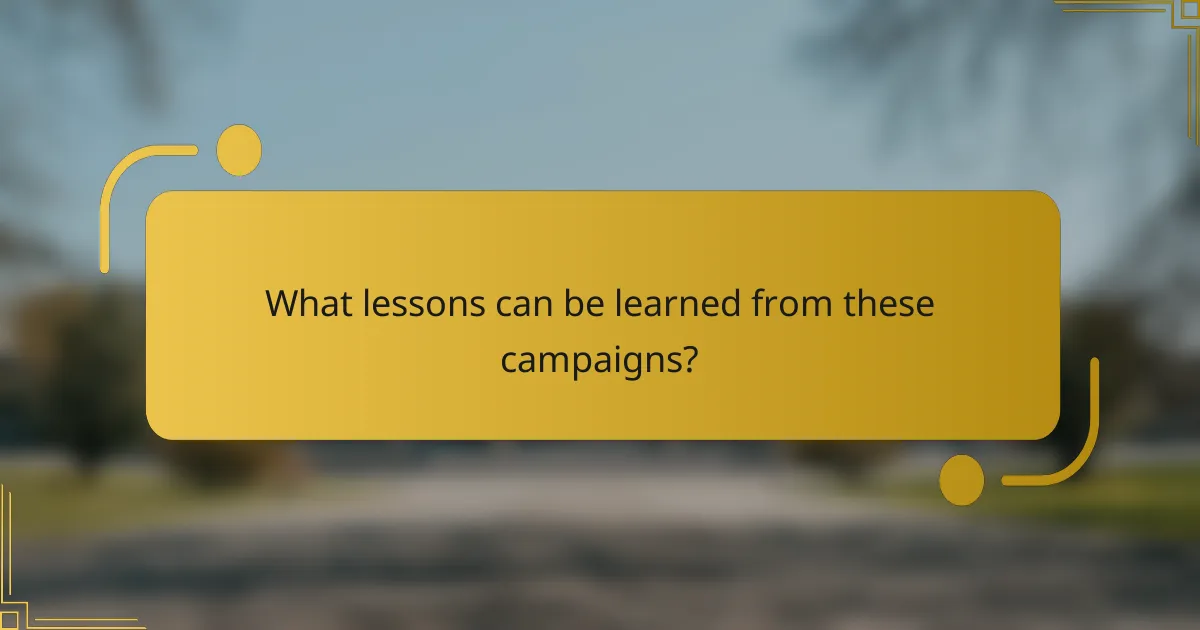
What lessons can be learned from these campaigns?
Successful peace campaigns demonstrate the importance of strategic planning, community involvement, and adaptability. Key lessons include the necessity of engaging local populations, employing nonviolent methods, and tailoring approaches to fit specific cultural and social contexts.
Importance of Community Engagement
Community engagement is crucial for the success of peace campaigns. When local populations are involved in the planning and execution of initiatives, they are more likely to support and sustain these efforts. This can be achieved through workshops, town hall meetings, and collaborative projects that foster a sense of ownership among community members.
Building trust within the community is essential. Campaigns should prioritize listening to the concerns and needs of residents, ensuring that their voices are heard and respected. This can lead to more effective strategies that resonate with the community’s values and aspirations.
Role of Nonviolent Strategies
Nonviolent strategies are often more effective in achieving lasting peace than violent confrontations. Techniques such as peaceful protests, dialogue, and negotiation can mobilize public support and create a more favorable environment for change. Historical examples, like the Civil Rights Movement in the United States, illustrate how nonviolent actions can lead to significant societal shifts.
Additionally, nonviolent methods tend to attract broader coalitions, including those who may be hesitant to support violent actions. This inclusivity can amplify the campaign’s impact and help maintain momentum over time.
Adaptability to Local Contexts
Adapting peace campaign strategies to fit local contexts is vital for their success. Each community has unique cultural, social, and political dynamics that must be considered when designing initiatives. Campaigns should conduct thorough assessments to understand these factors and tailor their approaches accordingly.
For example, a campaign in a rural area may require different tactics than one in an urban setting. Understanding local customs, languages, and power structures can enhance the effectiveness of outreach efforts and ensure that messages resonate with the intended audience.

What are the key components of a successful peace campaign?
A successful peace campaign typically includes clear objectives, effective leadership, and adequate funding. These components work together to create a structured approach that can effectively address conflicts and promote lasting peace.
Clear Objectives and Goals
Establishing clear objectives and goals is crucial for any peace campaign. These goals should be specific, measurable, achievable, relevant, and time-bound (SMART). For example, a campaign might aim to reduce violence in a specific region by a certain percentage within a year.
Additionally, objectives should align with the needs and aspirations of the community involved. Engaging local stakeholders in defining these goals can enhance buy-in and ensure that the campaign addresses the root causes of conflict.
Effective Leadership and Organization
Strong leadership and organization are vital for guiding a peace campaign. Leaders should possess a deep understanding of the conflict and the ability to inspire and mobilize diverse groups. Effective leaders often build coalitions that bring together various stakeholders, including community members, NGOs, and government entities.
Organizational structure should facilitate clear communication and decision-making. Regular meetings and updates can help maintain momentum and adapt strategies as needed. A well-organized campaign can respond swiftly to challenges and capitalize on opportunities.
Funding and Resource Management
Securing adequate funding and managing resources efficiently are essential for sustaining a peace campaign. Campaigns may rely on a mix of funding sources, including grants, donations, and partnerships with organizations. Establishing a budget that outlines expected expenses can help in tracking financial health.
Resource management involves not only financial oversight but also the effective use of human resources and materials. Prioritizing expenditures that directly support campaign goals can maximize impact. Regular evaluations of resource allocation can help identify areas for improvement and ensure accountability.

How do cultural factors influence peace campaigns?
Cultural factors play a crucial role in shaping the effectiveness of peace campaigns. Understanding local customs, values, and beliefs can significantly enhance the acceptance and success of these initiatives.
Understanding Local Traditions and Values
Local traditions and values form the backbone of community identity and influence how peace messages are received. Campaigns that align with these cultural elements are more likely to resonate with the target audience. For instance, using local languages and symbols can foster a sense of ownership and relevance.
Engaging community leaders who embody these traditions can also amplify the campaign’s impact. They can serve as trusted voices that bridge the gap between the campaign’s objectives and the community’s expectations.
Influence of Religion on Peace Efforts
Religion often plays a pivotal role in peace campaigns, as it can both unite and divide communities. Campaigns that incorporate religious teachings or collaborate with faith leaders can tap into existing networks of trust and influence. For example, interfaith dialogues can promote understanding and cooperation among different religious groups.
However, it is essential to navigate religious sensitivities carefully. Misinterpretations or disregard for religious beliefs can lead to backlash and undermine peace efforts. Therefore, campaigns should prioritize inclusivity and respect for diverse religious perspectives to foster a more harmonious approach to peacebuilding.
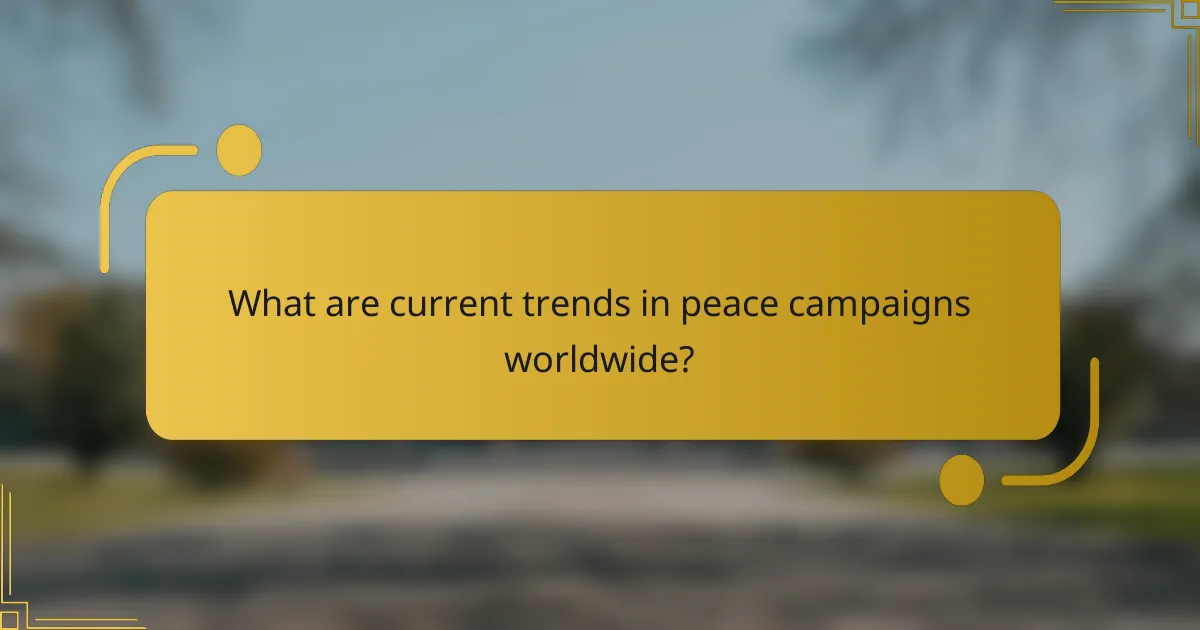
What are current trends in peace campaigns worldwide?
Current trends in peace campaigns worldwide emphasize the integration of technology, grassroots movements, and community engagement. These campaigns increasingly leverage digital platforms to amplify their messages and mobilize support across diverse demographics.
Digital Activism and Social Media
Digital activism and social media play a crucial role in modern peace campaigns by facilitating rapid communication and widespread outreach. Platforms like Twitter, Facebook, and Instagram allow activists to share their messages, organize events, and connect with supporters globally.
Campaigns often utilize hashtags to unify their efforts and raise awareness on specific issues, such as #PeaceNotWar or #EndViolence. This approach can quickly generate momentum, drawing attention from media outlets and policymakers alike.
However, digital activism also presents challenges, such as misinformation and online harassment. Campaigners should focus on building a strong online community, engaging authentically with followers, and verifying information before sharing to maintain credibility and effectiveness.
